The history of comics is a long and diverse tale spanning the majority of the 20th century. It has been divided up in various ways, but by most it’s considered to have began in 1938 with the introduction of Superman. It was called the Golden Age of comics. After that the Silver Age began in 1956 with the reboot of The Flash. The Bronze Age came third in the 1970s and expired at the beginning of the Dark Age in the mid eighties. That gave way to the Modern Age in the late 1990s and has persisted, until now. I believe that all of us, entirely unaware, have entered into a new age of comics. It’s an age defined by several factors that very much differentiate it from the modern age. To begin, I’ll first define what this last period is, then move into what makes this transition so special and different from all the others. Just like any of the ages, there is good and there are bad things that can be associated with it already.
What is the Modern Age
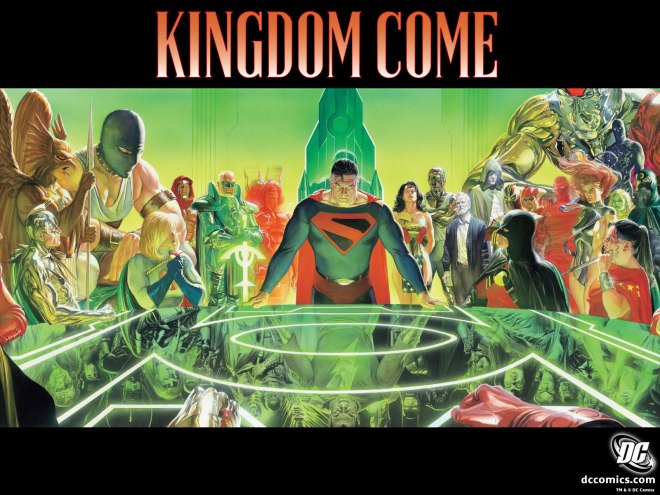
This has been something that many comic historians have struggled to define, the Modern Age of comics. Personally, as you see above, my view of the Modern Age begins in the late 90s, after the Marvel bankruptcy in 1996 and the bust of the comic book market, Marvel pulled itself back to dominance with the creation of the Ultimate Marvel universe in 2001. DC, similarly, made a return to form in 1998 with Mark Waid’s fantastic Kingdom Come. Both of these separated the Modern Age from the Dark Age by creating stories where they returned to the essence of what made these characters great. The events of the era, as a result, became more character driven than what they had written in the past. Arguably the most famous event, Civil War was based entirely around the difference in core principles between Captain America and Iron Man. This era also began the shift to design using computers for creating comics and releasing digital comics for mass audiences instead of exclusively print, but primarily this era was about returning to character driven stories.
What is this new age

Each Comic Age is defined not just by any single event, but a transition in storytelling. The Silver Age was defined by rebooted characters who had their powers derived through scientific reasonings or accidents instead of magic. Superman was charged by the yellow sun. Green Lantern got his powers because it was alien technology. The Bronze Age was defined by a increasing focus character motivations and dealing with more adult themes like drug use. The Dark Age revolved around deconstructing our heroes, focusing on anti-heroes, fights or big muscly men punching other big, muscly men.
This new age, I believe, began with the creation of DC’s “New 52” branding. The New 52 was not merely just a rebranding, it was an entire reboot of DC Comics as it was known. Essentially, over seventy years of continuity were either obliterated or shoehorned into a five year timespan, as all the heroes had only been active for five years.
Yeah.
To be fair, this was not the first time DC has revamped their continuity, most famously with Crisis on Infinite Earths, but even then continuity was not as thoroughly erased as it was in New 52 (Batman is a notable exception to this). DC has now dropped the New 52 branding and had their new multiversal shakeup, Convergence, which instead of changing the New 52, merely reaffirms the new continuity and shows DC’s furthering of it’s principles. Marvel, is now doing the same thing as we speak with Secret Wars and “All-New, All-Different Marvel.” Though the details are hard to understand until we actually get our hands on these new comics, it seems that Marvel’s new approach is similar to what DC has done, which is: simplify continuity, increase diversity in it’s comics, and bring comics into their larger corporate strategy, synergizing it with their cinematic universes. All of this is being done to emphasize commercial appeal and drive more readers into comic book stores. We have entered the Commercial Age of Comics.
What makes it different
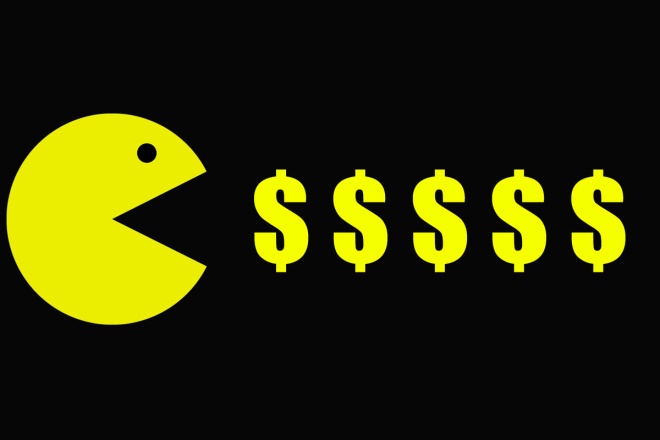
There are several things that make this age different, and define it compared to the Modern Age. In context this age mostly resembles the Silver Age, where publishers rebooted (DC Comics/Marvel) their core properties to make them more appealing to current audiences or created (anything by Stan Lee) new characters in line with modern tastes. What makes now different from then is DC and Marvel are both integrated into massive entertainment industry juggernauts: Warner Bros. and Disney. Just like any publicly traded corporation it’s goal is to drive stock prices and increase profits, with comics the best way to do that is increase their accessibility, and that’s being done three distinct ways: Increasing diversity, simplifying continuity, and synergizing the screen and print versions of comics.
Increasing Diversity
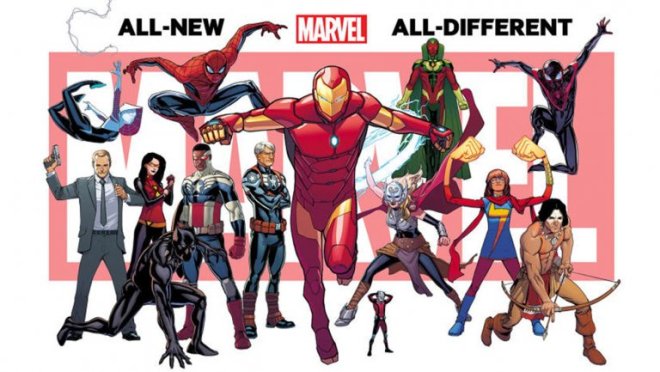
For years Marvel and DC have been attacked for not being representative of it’s readership, and it’s a fair point. For years the top selling comics have featured white men in capes and spandex. When I was a kid, the only black superheroes I could even name were Bishop and Blade. I didn’t know who Luke Cage or Black Panther or John Stewart were. The only women that didn’t have “woman” or “girl” in their name were X-Men. Now we have a Black Captain America, a female Thor, a gay Green Lantern, a half-black half-latino Spiderman, a female Wolverine, and the list goes on. The vast majority of these changes were done in an organic, character centered way that served the story.
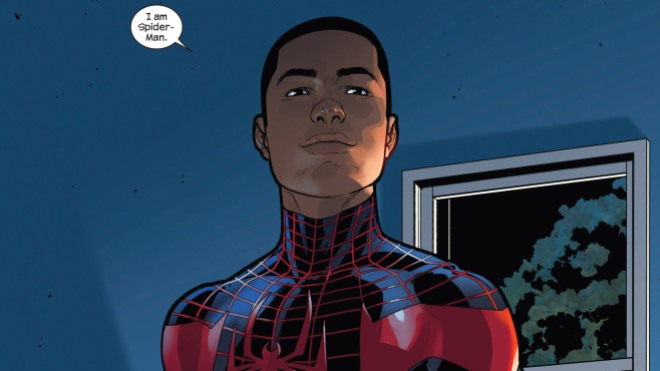
The best example of this is Miles Morales as Ultimate Spiderman. He gained his powers from a different genetically engineered spider from Oscorp, and after Peter Parker’s epic, heartrending, and heroic death saving his loved ones, Miles takes up the mantle of spiderman to honor Peter. Much of that is driven by his shame of not actually helping Peter Parker, whom if he had helped, would have lived. His story resonated with so many readers that not only did it show that a minority could hold down a comic previously seen as white, a minority character could excel in that comic. Before the “Death of Spiderman” arc, Ultimate Spiderman had between 33,000 to 44,000 ordered in 2010. After Miles Morales replaced Peter Parker orders ranged from 50,000 to 39,000 by 2012.
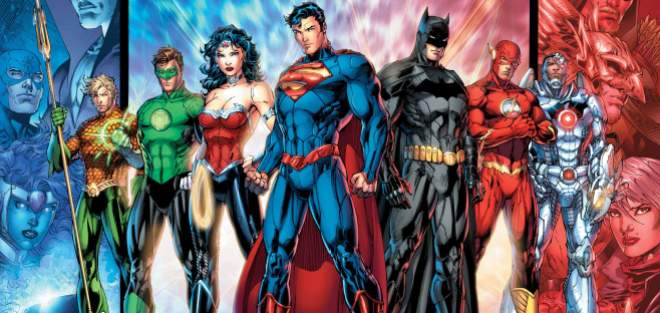
Though, it does feel at times that the industry is pushing subpar stories in order to get more diverse characters on the A-list (looking at you Falcon-Cap), that is the minority (no pun intended) of the stories being brought to us. Anything that brings us better characters is a good thing. Take Cyborg for instance. Created back in 1980, he was relegated to side-kick status even though he was not a sidekick. The character featured in Teen Titans, but never really outside of it. Eventually, he gained some prominence by being featured in Smallville as a powered friend of Clark and later a member of that show’s version of a Justice League. It was not until the New 52 reboot in 2011 that Cyborg was elevated to A-Team Justice League status. He wasn’t just promoted to the Justice League though. He was promoted straight to founding member. Why would that be? Because outside of him, the founding members of the Justice League are awfully monochromatic. In addition, it still took another four years for him to get his own book. Thankfully, it appears to be a great addition to DC’s lineup.
In my next post I’ll be discussing how the other two pillars of the new age: how continuity is changing to appeal to a larger audience, and how corporate strategy is dictating storytelling.



